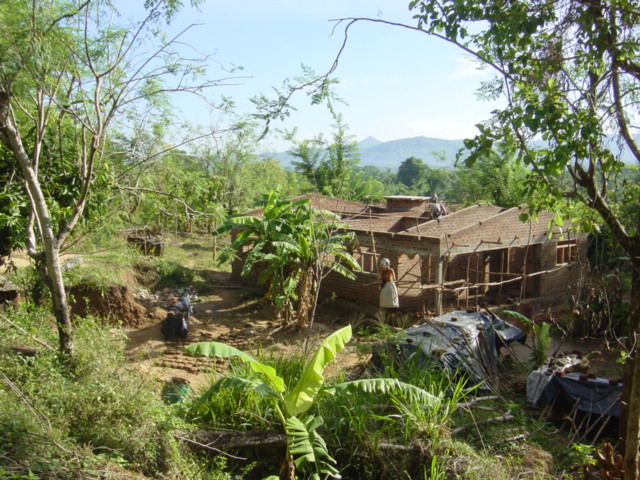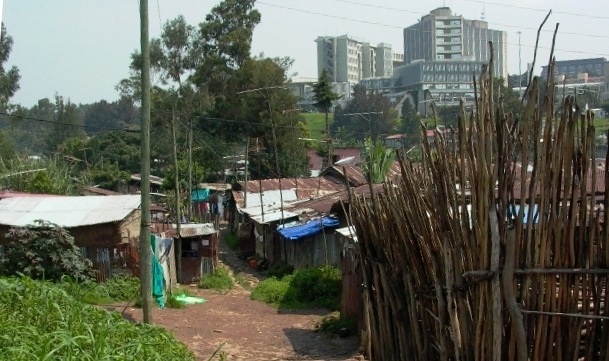_edited.header.JPG)
Making land work for the losers: policy responses to the urbanisation of rural livelihoods (Michael Mattingly)
Submitted by frankie on Sun, 2009-05-31 19:20.
Michael Mattingly | Michael Mattingly (2012)
The views expressed in 'Recent News & Reflections' are those of the author and do not necessarily reflect those of any of the governments, organisations or agencies with whom they have been working.
In International Development Planning Review (vol 31, no 1), Michael Mattingly has speculated on how land policy might reduce the negative impacts of cities on the livelihoods of peri-urban farmers who tend to be poor and especially vulnerable to change. Using the findings of 10 years of research on peri-urban livelihoods in developing countries, financed by the Natural Resources Systems Programme of the UK Government Department for International Development which he advised, he assembled evidence of how land can figure in the changes to rural livelihoods.
 |
More attention to peri-urban livelihoods based on land is justified because, on the one hand, manuals on managing urban land pay them little regard, and those for rural planning or land management are no better. On the other hand, until quite recently, livelihoods have rarely featured in published work on the peri-urban interface.
Only three peri-urban interfaces were examined by this research: those of Kumasi in Ghana and Hubli-Dharwad and Kolkata in India. Nevertheless, the findings provided examples of what can happen, thus identifying a general challenge for policy affecting land. Livelihoods changed as land uses changed and households lost capital; households had to leave non-cash rural economies too quickly; farming remained important even though the supply of land was diminishing; sometimes farmers were able to re-use urban wastes; they increased their orientation to urban markets; food security was reduced both to farming families and the city; and assistance from NGOs and government was weak.
Implications for urban and rural policy affecting land
The article argues that policy and interventions affecting land might help poor people through the difficult passage from rural to urban living, for the research showed that interventions were able to do this. For example, initiating trials of alternatives supported people’s moves into new or enhanced productive activity compared with those who did not participate in the research trials. This would probably mark a new policy direction for government agencies and NGOs, but it could reinforce other policies aiming at better environmental management and even others that seek to strengthen local and family food security through support for small farmers with market knowledge, with better access to seeds and fertiliser, with micro-credit, etc.
The principle aim could be to affect land quality, use, and rights, so as to permit – and even encourage – the continuation of agriculture on peri-urban land until urban construction on it actually begins. If the speed of any changes imposed on land-based livelihoods could be slowed, this could provide more time for people to prepare and carry out their transition into an urban economy, while prolonging a degree of food security. Yet, such measures could be of no help without interventions that ensure there are gains from this extra time: that the flow of inputs to households is maintained and that more of it is converted to cash, that capital is secured and increased, that new skills are learned and new knowledge obtained, that livelihoods are increasingly diversified, that new productive activities are tried, and new social and political relationships are built.
Whose policies?
Logically, a rural government is dominated by the rural concerns that are faced by the majority of its constituents. Nevertheless, rural local governments could do more to support agriculture adjoining cities and towns. They could take the lead in providing technical advice on peri-urban farming and land fertility maintenance, in improving access to credit, and in strengthening security of tenure. Furthermore, they could increase their defence of the land needs and land rights of farmers, including that required against more powerful and aggressive urban governments.
Urban governments have equal responsibilities by virtue of the impacts of their actions. The new land demands and the wastes to be managed are theirs. Often, their land planning powers extend into the rural areas in question, even those beyond municipal boundaries. Often, it is their development of large sites that all too quickly destroy rural livelihoods. They could plan the expansion of their cities to give more time to the most vulnerable farmers to make the transition, and they could directly and indirectly act to improve compensation for land rights that are taken. Also, they could take peri-urban production in account as they dispose of their wastes.
New aims, new knowledge, new skills, and new experts are all required in both rural and urban institutions if there is to be a change. The rewards could be a better transition to the urban economy and more secure food supplies for large numbers of people, perhaps also some valuable lessons for managing rural to urban migration in general.
 |
